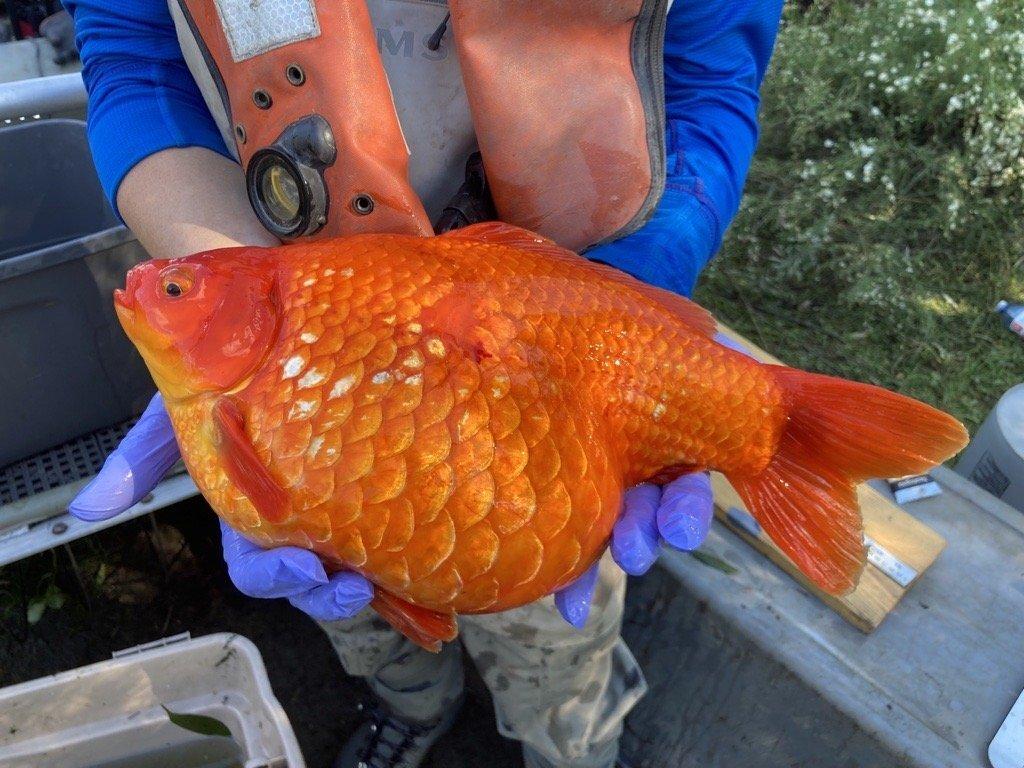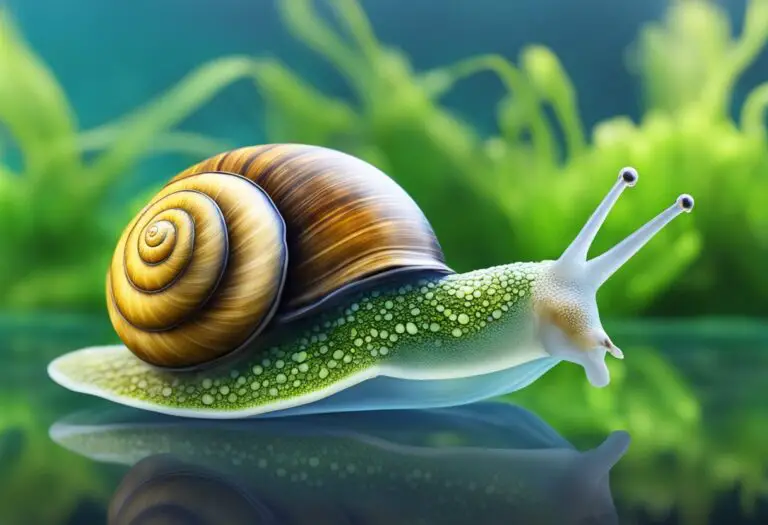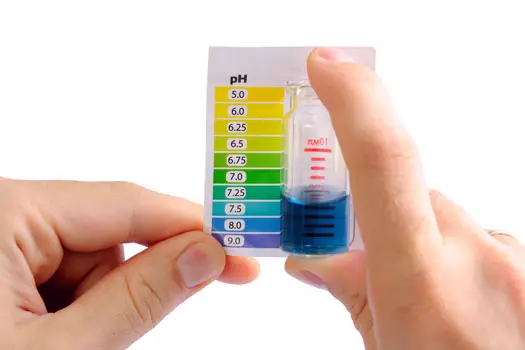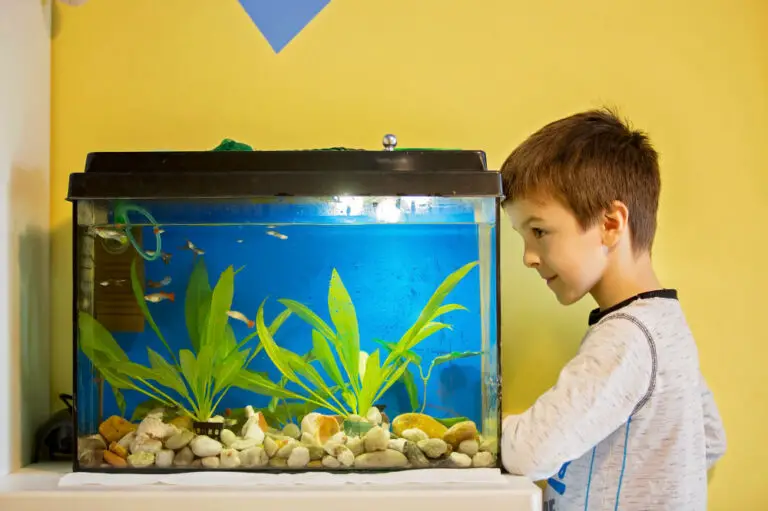Tips for keeping Your Pot Belly Goldfish Healthy
Pot Belly Goldfish is a type of fancy goldfish that has an egg-shaped body and a protruding belly. It gets its name from the large, round bump on their stomachs. They are usually very shy and reclusive fish, preferring to stay in dark corners or hideouts within the aquarium.
This type of goldfish needs plenty of hiding spots as well as room to swim around freely. Pot bellied goldfish also have short fins which makes them slow swimmers compared to other types of goldfish, so they may require a larger tank in order for them to get enough exercise. They typically enjoy live food such as worms, brine shrimp and bloodworms but can eat flakes too.
It is important to feed them small amounts throughout the day instead of one big meal because their digestive system isn’t strong enough for this kind of eating pattern.
Pot Belly Goldfish are a unique and fun breed of goldfish that have become increasingly popular in recent years. They are distinguished by their short, plump bodies and large eyes. Unlike other varieties of goldfish, Pot Bellies don’t need as much space to thrive in aquariums or ponds, making them ideal for smaller spaces.
Additionally, they tend to be hardier than most other types of goldfish and can even survive in outdoor temperatures during the winter months without any special precautions. With their interesting shape and long lifespan (up to 10 years!), it’s no wonder why so many people love keeping these fascinating fish!

Credit: badmanstropicalfish.com
How Do You Fix a Bloated Goldfish?
If your goldfish is bloated, it can be an alarming sight. Thankfully, there are steps you can take to help fix the problem and get your fish back to its normal size. The first step is to find out what might have caused the bloating in the first place.
Common causes include overfeeding, constipation due to poor diet or a lack of fiber in their food, parasitic infections, bacterial infections and environmental issues such as overcrowding or poor water quality. Once you know what might be causing the issue, then comes the important part: treating it accordingly! If your goldfish has been overfed for example, reduce feeding portion sizes and feed only once per day for a few days until they’ve lost some weight.
If constipation may be an issue try adding more vegetables like peas or cucumber which can provide extra fiber without too many calories that could cause further weight gain. For bacterial and parasitic infections seek advice from an experienced veterinarian who will likely prescribe antibiotics or other medications if necessary to treat any underlying infection that may be present.
Finally make sure all water parameters are within optimal ranges ( pH , temperature , nitrate levels etc ) as this helps ensure a healthy environment for goldfish recovery .
By following these steps carefully you should see results soon enough, good luck!
Why Does My Goldfish Have a Big Belly?
Goldfish often have a big belly due to a number of possible reasons. Firstly, goldfish can become overfed if they are given too much food. This could cause their stomachs to swell up and become enlarged as the fish tries to digest extra food that it doesn’t need.
Secondly, poor water quality may also be responsible for your goldfish having a large belly. Poor water conditions such as high levels of ammonia or nitrates can weaken the digestive system of the fish, causing them to bloat and develop an enlarged stomach area.
Lastly, constipation is another common reason why goldfish might appear bloated – this occurs when there is not enough fiber in their diet which prevents waste from being eliminated properly and causes blockages in the digestive tract leading to bloating around the abdomen area.
In any case, it’s important that you take action quickly if you notice your fish has a swollen stomach so that you can ensure its health and wellbeing moving forward!
Why is My Goldfish Bloated With Scales Sticking Out?
Your goldfish may be bloated with scales sticking out for a few different reasons. One possible cause is dropsy, which is a bacterial infection caused by poor water quality or an underlying illness. It can result in your fish’s scales protruding and its body being swollen.
Another potential reason could be constipation, which can occur if you feed your fish too much food or the wrong type of food. In this case, it’s important to get rid of any uneaten food from the tank and provide your fish with a healthy diet that mainly consists of vegetable-based foods like peas, cucumbers and spinach. Lastly, there are certain types of parasites known as “anchor worms” that attach themselves to the outside of the goldfish’s body and can cause swelling as well as protruding scales.
If you suspect this is what’s causing your goldfish’s bloating, then you should contact an experienced vet for advice on how to safely remove them without harming your pet further. Regardless of what might be causing these symptoms in your fish, it’s essential that you take steps immediately in order to prevent further damage and ensure their health going forward.
What is the Chubby Goldfish Called?
The chubby goldfish is a unique and beautiful type of fish that has become increasingly popular among aquarium owners. This fish, also known as the Oranda Goldfish, is characterized by its large head and body shape, which gives it a “chubby” look. The most noticeable feature of this type of goldfish is the prominent hood-like growth on its head, which covers the majority of its face.
In addition to their unique appearance, they are prized for their hardiness and peaceful temperament in comparison to other types of goldfish. They can grow up to 8 inches long and live up to 10 years if kept well in an appropriate size tank with clean water conditions.
Upside down Goldfish Swim Bladder operation
Goldfish Dropsy Or Pregnant
Goldfish Dropsy is a disease caused by bacteria or parasites and can be fatal if not treated. It is usually identified by the fish’s scales sticking out from its body in an unnatural way, as well as lethargic behavior and changes in color. On the other hand, it is possible for goldfish to become pregnant when two sexually mature fish are housed together; female goldfish will appear rounder than usual with bulging eyes when they carry eggs.
It’s important to remember that while goldfish may look pregnant, this does not mean that they have Goldfish Dropsy.
Dropsy Goldfish
Dropsy is a common goldfish disease that is caused by an internal bacterial infection. It results in the fish’s abdomen becoming bloated and discolored, which can be fatal if left untreated. To prevent Dropsy from occurring, it’s important to maintain clean water conditions and provide your goldfish with proper nutrition.
Additionally, any signs of illness should be monitored closely so that treatment can begin immediately if necessary.
Goldfish Bloated Stomach Upside down
When a goldfish’s stomach becomes bloated, it can get flipped upside down in the water and become unable to swim properly. This is known as “swim bladder disorder” and can be caused by overfeeding or other environmental factors such as temperature fluctuations or pH imbalance. If you notice your fish swimming on its side, check for signs of bloating and contact your veterinarian if necessary to ensure proper treatment.
Goldfish Bloated And Sitting at Bottom of Tank
Goldfish may become bloated and sit at the bottom of the tank if they are suffering from a condition known as swim bladder disorder. This is caused by an imbalance in their diet or poor water quality, so it’s important to make sure that your goldfish has access to a healthy diet and clean water. If you suspect that your fish may be suffering from this condition, take them to a vet for treatment as soon as possible.
What Causes Dropsy in Goldfish?
Dropsy in goldfish is caused by a bacterial infection called Aeromonas hydrophila. This bacteria is found naturally occurring in the environment, and can enter through open wounds or even when changing tank water. Dropsy occurs when the body swells due to an excess of fluid buildup from inflammation caused by the bacterium, which can cause organ damage and eventual death if not treated quickly.
Proper nutrition and clean aquarium conditions are essential for preventing this condition in your pet fish.
How to Treat Bloated Goldfish?
Treating a bloated goldfish can be done in several ways. First, if the fish is not eating and appears to have a swollen belly, it should be moved to an isolation tank with clean water and monitored for changes. If possible, removing any uneaten food from the main tank may also help reduce bloating.
Additionally, feeding fewer but smaller meals more frequently can help reduce bloating by allowing the fish’s digestive system time to process their food properly. Finally, providing your goldfish with plenty of oxygen through aquarium aeration or frequent partial water changes will ensure they remain healthy and active.
Bloated Goldfish in Pond
Goldfish in ponds can become bloated if their environment is unhealthy or they are overfed. Poor water quality, such as too much uneaten food and a lack of oxygen, can lead to bloating due to an imbalance of bacteria in the fish’s gut. Additionally, overfeeding goldfish can cause them to become bloated because they will eat more than they need and then be unable to digest it all properly.
To prevent bloating in your pond goldfish, make sure you feed them only what they need (no more than two times per day) and keep their environment clean with regular water changes.
Goldfish Swollen Belly on One Side
Goldfish are prone to a condition called “Swim Bladder Disease” which can cause their bellies to become swollen on one side. This is due to an imbalance in the gas levels inside the fish’s swim bladder, causing it to be unable to properly control its buoyancy. The most common treatment for this issue is fasting your goldfish for a few days and then feeding them low-starch foods such as blanched vegetables or sinking pellets that contain fewer carbohydrates.
Additionally, increasing water circulation and doing regular partial water changes may also help reduce bloating and improve overall health of your goldfish.
Conclusion
This blog post has highlighted the unique nature of Pot Belly Goldfish. Not only do they have a distinct and attractive appearance, but they are also hardy animals that make excellent pets for novice aquarists. With proper care and maintenance, these goldfish can live long and healthy lives in any home aquarium.
If you’re looking for an unusual fish with lots of character, then consider adding a Pot Belly Goldfish to your tank today!






